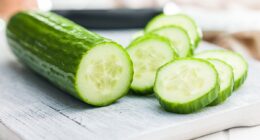If your kitchen is usually stocked with a variety of herbs and spices, allspice may be one that you don’t typically get lots of use out of. While most people associate allspice with recipes like pumpkin pie, there are lots of other ways to utilize this nutrient-rich spice too, such as in seasonings, marinades, meatballs and mulled wine.
What are the ingredients in allspice? And how many spices are in allspice?
The name is actually misleading, because allspice isn’t in fact a blend of several spices. Below we look at what exactly allspice is, the two forms you’ll find it in (whole and ground), plus the benefits of adding it to both sweet and savory recipes.
What Is Allspice?
Allspice is a cooking spice that has a unique, sweet and “warm” flavor. You may sometimes see it referred to as pimento berry oil or Jamaican pepper.
It’s not a spice blend but actually one healing spice made from the ground brown berries of the tropical Pimenta dioica plant, which is native to Jamaica, the West Indies and Central America.
Why is allspice called allspice? It supposedly earned its name from European settlers in the 17th century because it resembles the taste of a combination of clove, cinnamon and nutmeg.
Still today it’s commonly combined with these spices in recipes, such as gingerbread cookies and apple pie. It’s also one of the most prominent spices used to make jerk seasoning and pumpkin pie spice.
In terms of how it tastes, many people find it to be most similar to clove. Both spices contain the compound called eugenol, which has a signature warm aroma and flavor.
Allspice also contains cineole caryophyllene, which is described as tasting woody and fresh.
Ground vs. Whole
In order to make dried allspice seasoning, whole allspice berries are first harvested when unripe, then fermented and sun- or machine-dried. They are first picked when they are green in color but turn a reddish-brown during the fermentation and drying processes.
Whole allspice berries are small, round and look like “extra-large peppercorns.” Some people prefer to grind whole berries rather than using pre-ground allspice because this results in a stronger flavor.
Once the berries are ground, they begin to lose some of their intensity in terms of aroma and flavor.
Most often whole berries are used for pickling and making mulled wine, while ground berries are used in baking and making sauces, soups and stews.
If you prefer to grind your own berries, you do this at home using a mortar and pestle or in a high-speed food processor. (A blender may be too big to grind a small amount of berries.)
A little goes a long way, so you only need to grind several tablespoons at a time. Once ground, keep the powder in an airtight glass jar to seal in the flavor.
If you find that the berries have a bit too much flavor for you and you want to turn down the aroma a bit, cook them before you use them, such as baking them for 10 minutes or heating them in a skillet briefly.
Benefits/Uses
What is allspice good for? Below are some of the benefits associated with allspice berries.
1. Contains Antimicrobial and Anti-inflammatory Compounds
Like clove, cinnamon and similar spices, allspice is sometimes used to make concentrated essential oil that is high in antimicrobial and anti-inflammatory compounds, including eugenol, ethyleugenol, caryophyllene, glycosides and polyphenols.
READ RELATED: Why You Should Eat Dirt – Yes, Dirt!
According to one report published in Current Drug Targets, allspice contains aromatic compounds that have antibacterial, hypotensive, anti-neuralgic and analgesic properties. Recent studies have shown two of the known compounds isolated from allspice, eugenol and gallic acid, also have certain antiproliferative and anti-tumor properties on human cancer cells.
Uses for allspice essential oil are similar to those of clove oil — which include helping to dull pain and muscle aches, ease cramps and indigestion, and reduce cold and flu symptoms.
Eugenol is also known for its antiseptic properties, while other antioxidants found in allspice oil are capable of scavenging free radicals. These are two reasons why applying allspice oil to the skin when mixed with a carrier oil (perform a skin patch test first) can help boost skin health.
2. Adds Flavor Without Sugar/Calories
The great thing about using spices in baked goods and other recipes is that they boost the taste while keeping sugar and calories low. Good-quality spices, such as allspice, ginger and cinnamon, can be added to healthy recipes for cookies, muffins, breads, oatmeal, etc., to help you cut back on other less-healthy ingredients.
3. Can Be Used to Make a Digestive-Soothing Tea
Allspice is sometimes used to make herbal teas and infusions that can help reduce digestive symptoms, such as gas, cramps and bloating. It’s also recommended for women dealing with menstrual discomfort.
You’ll sometimes find this oil in massage blends that can be applied to the abdomen, in aromatherapy blends made for diffusers, perfumes, body care products and more. The signature smell is also said to support positivity and offer comfort due to its “grounding” qualities.
4. May Help With Menopause Symptoms
Research shows that allspice may be able to help treat menopause symptoms due to the way it “acts as partial agonist/antagonists by enhancing estradiol-stimulated pS2 mRNA expression but reducing progesterone and PTGES mRNA expression with E2.” In fact, a study published in 2018 concluded, “Compounds from P. dioica have oestrogenic, anti-oestrogenic and cytotoxic effects that may explain the ethnomedical use of this plant.”
5. Holds Cancer-Fighting Properties
Many studies show that the compounds found in allspice, such as polyphenols and other antioxidants, make it a cancer-fighting food. For instance, one study found that adding allspice extract led to cellular growth depression in prostate cancer cell lines. It’s believed the ericifolin found in this spice has antitumor effects on prostate cancer.
Meanwhile, an animal study revealed that allspice berries “demonstrate antitumor and chemo-preventive activity” against breast cancer in mice.
Recipes
You’ll find allspice in not only fall-inspired recipes like pumpkin pie, but also savory recipes, including Jamaican jerk chicken, mince pie and Swedish meatballs. It’s popular in baked goods and also in Caribbean, Middle Eastern and Latin American cuisines.
In addition to adding some of this spice to cooked recipes, you can use whole berries to infuse spiced/mulled wine or to make apple cider. They can also be used when making pickling brine, such as to make homemade fish like herring, pickles or vegetables.
Pay close attention to whether a recipe calls for whole or ground berries. Six whole allspice berries are the equivalent of about 1/4 to 1/2 teaspoon of ground allspice.
Here are some recipes ideas to get you started:
- Make homemade pickles using a brine of allspice berries, whole cloves, mustard seed, black peppercorns and bay leaves.
- Try a homemade jerk seasoning blend using allspice, nutmeg, black pepper, thyme, cayenne pepper, paprika, sugar, salt, garlic and ginger.
- Use some in this gluten-free meatballs recipe.
- Combine allspice with other warm spices in this healthy gluten-free pumpkin bread or pumpkin spice latte. Or try some in this gluten-free apple crisp recipe.
- Making a savory stew, such as Paleo chili.
Substitutes
While allspice doesn’t taste exactly like clove, the two are similar and can often be substituted. You’re less likely to notice a difference in taste if combining these spices with others, including cinnamon, ginger and nutmeg.
Risks and Side Effects
If you’re allergic to clove or similar spices, be very cautious when consuming allspice. Since these spices share similar compounds, you may experience a reaction when consuming both.
If using allspice essential oil for the first time, use a very small amount, and always combine it with a carrier oil since it can be irritating. Test your reaction before applying more.
Also avoid consuming allspice essential oil internally unless working with your doctor, since it can be toxic to ingest in some cases.
Conclusion
- What is allspice? It’s a “warm and sweet” spice made from dried berries of the Pimenta dioica tree, which is native to the Caribbean and Central America.
- These dried berries look like small brown peppercorns and are full of beneficial compounds that have antimicrobial and anti-inflammatory properties.
- Traditionally it’s been used to support digestive health, reduce pain and promote relaxation/grounding.
- Uses for this spice include making pumpkin pie spice and jerk seasoning, plus meatballs, stews, chili, pickles and much more. You’ll also find it in skin care and beauty products, perfumes, and other aromatherapy blends, especially those that are popular around the holidays.
!function(f,b,e,v,n,t,s)
{if(f.fbq)return;n=f.fbq=function(){n.callMethod?
n.callMethod.apply(n,arguments):n.queue.push(arguments)};
if(!f._fbq)f._fbq=n;n.push=n;n.loaded=!0;n.version=’2.0′;
n.queue=[];t=b.createElement(e);t.async=!0;
t.src=v;s=b.getElementsByTagName(e)[0];
s.parentNode.insertBefore(t,s)}(window, document,’script’,
‘https://connect.facebook.net/en_US/fbevents.js’);
fbq(‘init’, ‘3475171552810057’);
fbq(‘track’, ‘PageView’);




